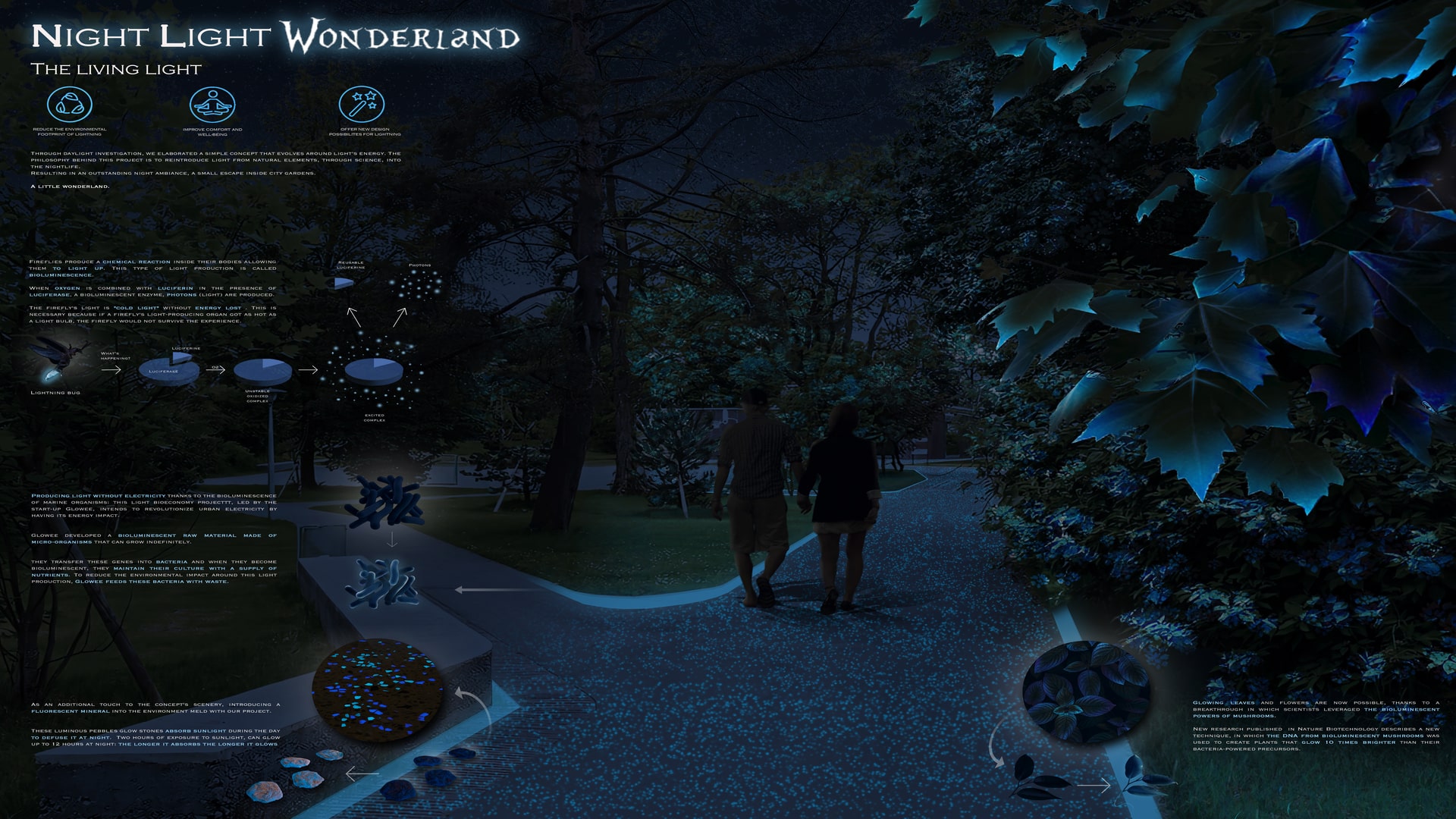Project Description
Through this daylight Investigation journey, we wanted to reconnect people back with nature. We looked at ways to capitalize on natural resources in terms of lighting into and to trigger a concept that involves ecology, sustainability, and innovation. We studied animals that naturally emit light at night so as to understand their metabolism. Fireflies are one of the several examples that attracted our attention. These little flies form a chemical reaction inside their bodies allowing them to light up. This type of light is called bioluminescence meaning when oxygen is combined with Luciferin in the presence of luciferase, a bioluminescent enzyme, therefore, light is produced. A firefly's light is a "cold light". It does not involve any energy loss. Its cooling effect prevents its light-producing organ from heating up and melting in its own body. Therefore, bioluminescence is our key to have an enjoyable atmosphere and soft ambiance that we wanted to set up with specific care to avoid any related negative environmental impacts. The question we might ask would be as follows: How could we implement this kind of technique and how could we use it as an urban lighting solution? This scientific evolution supplies us with enough facts to power our elaborated concept that we chose to call “A Night Light Wonderland”. The answer is “glowing leaves” and “microorganisms”. Scientific and genetic interventions that transmit the property and the ability to light up at night. Glowing leaves and flowers are now possible to be implemented in such an approach. New research published in Nature Biotechnology describes a new technique, in which the DNA from bioluminescent mushrooms was used to create plants that glow 10 times brighter than their bacteria-powered precursors. Producing light without electricity is feasible now. Thanks to the bioluminescence of marine organisms. This project, led by the start-up Glowee research group, intends to revolutionize urban electricity by having its positive energy impact. They developed a bioluminescent raw material made of micro-organisms that can grow indefinitely by transferring these genes into bacteria to become bioluminescent. They maintained their culture with a supply of nutrients. Such an intervention on their genetic heritage is transmitted from one generation to another which means one flower can transmit its light ability to all flowers grown from its seeds. The result we came up with through this research, is a glow in the dark garden, self-powered and sustainable so as to help lower light pollution in cities through achieving a visual comfort and to save our natural resources with 0% artificial energy use. In addition to that, this concept is adaptable anywhere in the world offering different, new, and unique experiences to the people via new public places where to hang out specifically during night-time. Bringing people closer to their environment, promoting well-being, and a relaxing ambiance that was our mean concern. A real-life night light wonderland.
